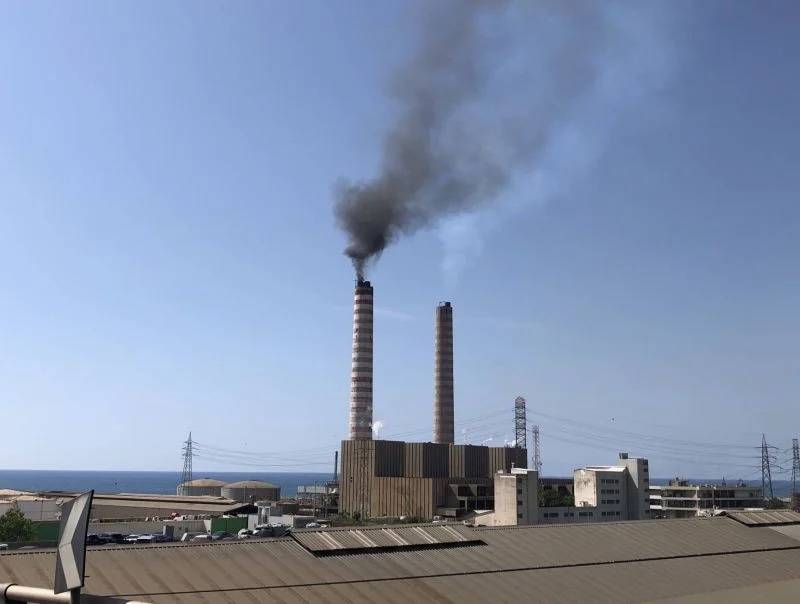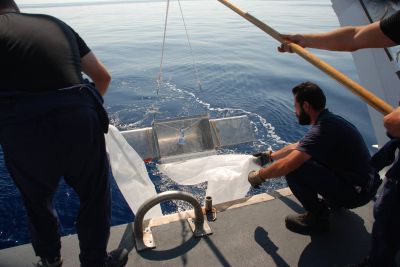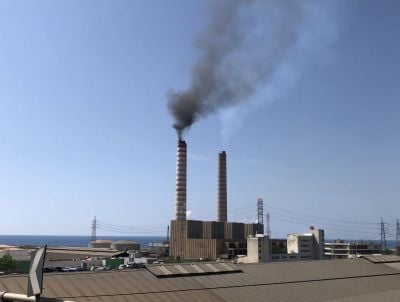
The Zouk Mosbeh power plant. (Credit: PHB)
Like many facilities run by official authorities, the Environment Ministry’s national air pollution monitoring network is out of service due to financial reasons. This has been the case since April 2019, said Hassan Dhaini, a senior advisor in the field of toxicology to the caretaker environment minister.
So there is no accurate means of calculating the impact of the energy crisis, the deterioration of the car fleet or the Aug. 4, 2020 Beirut port explosion on the already contaminated air.
There were only a few estimates made based on limited measurement campaigns, such as the one carried out in 2021 by the team led by MP Najat Aoun Saliba.
At a time when neighborhood generators were operating almost around the clock, the levels of certain pollutants were said to have risen by 300 percent compared with pre-crisis levels.
However, even in the absence of regular, reliable figures, studies carried out in recent years have revealed more about the deterioration in air quality and its impact on health. Their results reflect how serious the situation is and the various authorities’ failure to apply appropriate measures.
Increase in fine particle matter levels
One of these studies, entitled “Toxicity of fine and quasi-ultrafine particles” was carried out by a dozen researchers from the French National Center for Scientific Research Council (CNRS) and partners, and published in 2020. It provides a comprehensive overview, from the sources of pollution to their effects on health.
It focuses on two pollutants classified as carcinogens by the International Agency for Research on Cancer (IARC), an intergovernmental agency affiliated to the World Health Organization (WHO). These pollutants are extremely dangerous because they are very small and can penetrate deep into the bronchial tubes.
According to Imane Abbas, toxicologist and associate researcher at the Lebanese Atomic Energy Commission, who took part in the CNRS study, the samples were collected in 2017 in a particularly congested and polluted part of Beirut, known as the old airport road.
The cutting-edge process used consists of bringing human cells into contact in vitro with pollutants collected from the air in order to explore more specifically the mechanisms of action involved in the toxicity of atmospheric pollutants, particularly in the development of respiratory diseases.
The other interesting aspect of this study is the ability to determine very precisely the most recurrent sources of pollution on the basis of the pollutants detected in the air.
This brought the researchers down to the three main sources of pollution: energy (fuel oil-powered generators), traffic and the uncontrolled incineration of household waste.
“In order to give an idea of the density of such substances in the air, the average concentration of fine particle matter that we measured at that time was 54 micrograms (mcg) per cubic meter, or more than 3.5 times the level authorized by the WHO, which is 15 mcg/m³,” said Abbas.
“In 2016, a year earlier, this rate was 48 mcg/m³. It is therefore on the rise, and we can assume that it has increased since 2017, particularly since the crisis that broke out in 2019,” she added.
Another worrying finding is that quasi-ultra-fine particle matter (much smaller in size) “contain four to 43 times more toxic compounds than ultra-fine particles. Given their size, they are more likely to circulate in the air and be inhaled,” said the expert.
Increased risk of cancer
Does this mean that the air in Lebanon is carcinogenic? Abbas wants to reassure, especially as the study was carried out in vitro, in conditions that are different from real life. “It’s important to remember that a toxic, carcinogenic substance emitted into the air does not necessarily cause the illnesses it is likely to cause,” she said.
“The [human] body has defense mechanisms and tries to get rid of these undesirable substances through coughing, for instance. Moreover, there are cells in the pulmonary alveoli that play an important role in the body’s defense against these pollutants, which they break down. However, the more the pollutant is present in the air, and the smaller its size, the more likely it is to escape this defense mechanism and end up in the bloodstream. That is not to mention the accumulation of these substances in the body when exposure is prolonged,” she said.
Other studies have explored the link between air pollution and the occurrence of cancer from an epidemiological point of view. Dhaini’s team at the AUB, where he is also professor of environmental health, in collaboration with the Saint Joseph University (USJ) and a group of French researchers, has focused on a group of pollutants that are very present in the atmosphere: organic hydrocarbons and fine particle matter, which come mainly from traffic combustion and gasoline evaporation.
“We measured the risk of cancer in the capital associated with exposure to these organic pollutants and with deaths,” he said.
“According to our findings, organic hydrocarbon pollution alone increased the risk of cancer in Beirut by 40 to 60 times the threshold defined by the US Environmental Protection Agency, which is 1/1,000,000 inhabitants. We have estimated 250 to 320 deaths linked to this pollution in our projection model,” he added.
Cancer is not the only major risk linked to air pollution. Another study published in 2021, also conducted by this team at the AUB, aimed to measure the impact of air pollution on congenital malformations.
“We collected data from 2013 to 2016 from the national register of congenital malformations,” stressed Dhaini. “Of the 11,000 mothers and babies included in the study, we identified 535 cases of malformations of various types, which is a considerable number. We took into account pregnant women’s exposure to three pollutants: fine particle matter, nitrogen oxide and Sulphur oxide, in addition to other risk factors such as smoking, folic acid intake and consanguinity,” he said.
Conclusion: exposure to abnormally high levels of fine particles matter increases the risk of congenital malformations by 15 percent. The results for the other two pollutants were inconclusive.
Solutions not so difficult
Shouldn’t the appalling results of these studies, which have received very little media coverage, in themselves be an incentive to fight this scourge?
“We mustn’t forget that the problem of air pollution would be easy to solve in Lebanon, which is not an industrial country,” said Abbas.
“If the power cuts are dealt with, if a solution is found to the waste problem and if improvements are made to traffic [such as the resumption of mechanical checks, for example], the rate of atmospheric pollution would drop considerably,” she said.
“The point of such studies is to shed light on the risks of air pollution with a view to adapting the measures to be taken and the legislation to be adopted,” added Dhaini.
“For example, an air/health index and an automated notification system could be used to warn pregnant women and other vulnerable groups not to go out during certain pollution peaks. We could also regulate traffic according to pollution levels. But to do that, we need a constant calculation of the level of pollutants in the air,” he said.
So what are the authorities doing about it? Dhaini cited two initiatives by the Environment Ministry: an attempt to reactivate part of the ministry’s monitoring network, using part of an international grant obtained through the World Bank, and the modernization of the authorized pollution emission limits, particularly for industry and the energy sector — values that were to be applicable from February 2023.
The problem is that the application of such measures is multidisciplinary and should involve several ministries at once. The expert Habib Maalouf, who recently organized a panel discussion under the auspices of the Environment Ministry and partners, at which the results of these studies were presented, has come up with recommendations for the application of firmer regulations on fuels, generators [which should be fitted with filters], the encouragement of public transport and renewable energies, as well as better data collection and a strengthening of the prerogatives of the ministry and municipalities.
This article was originally published in French in L'Orient-Le Jour. Translation by Joelle El Khoury.


